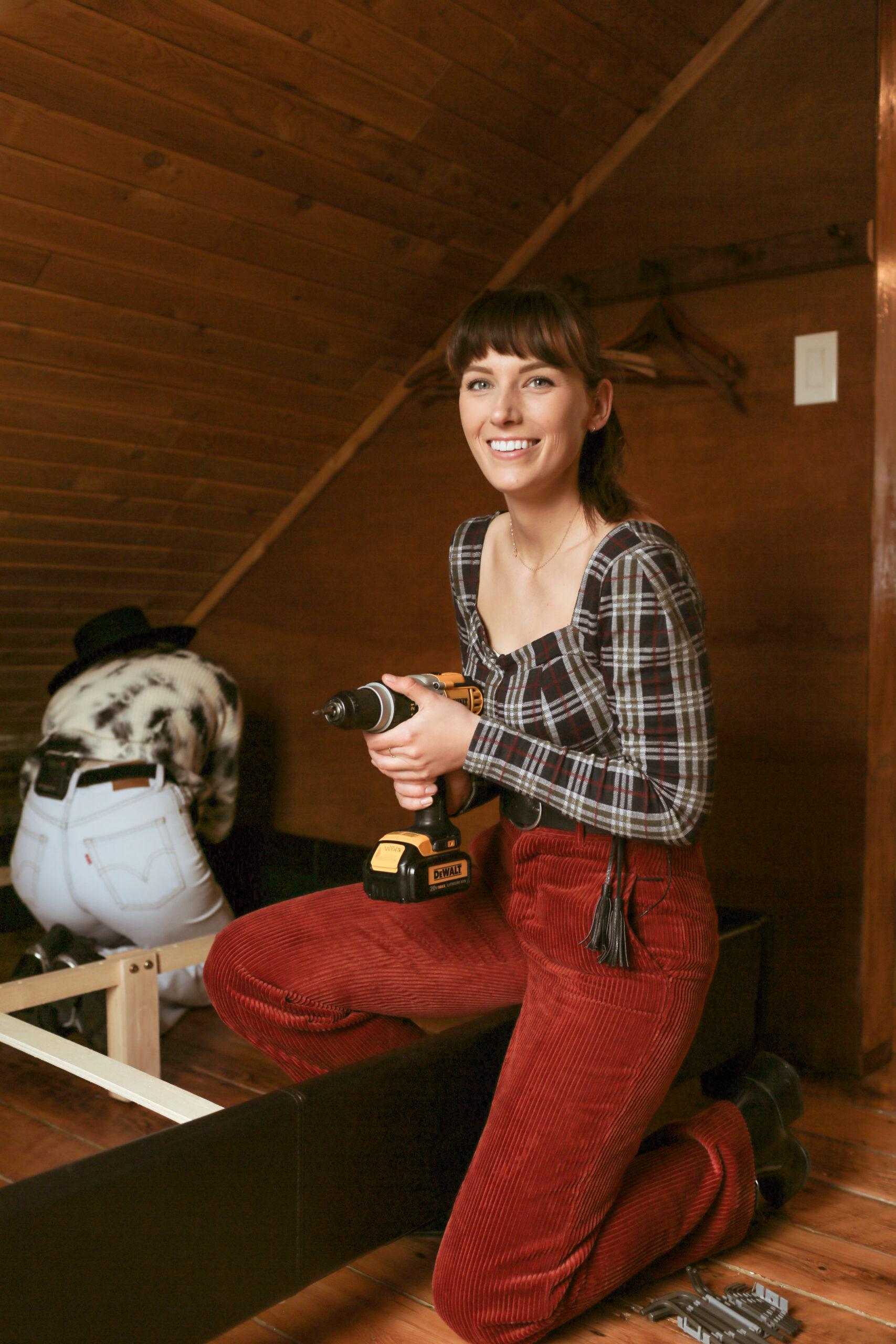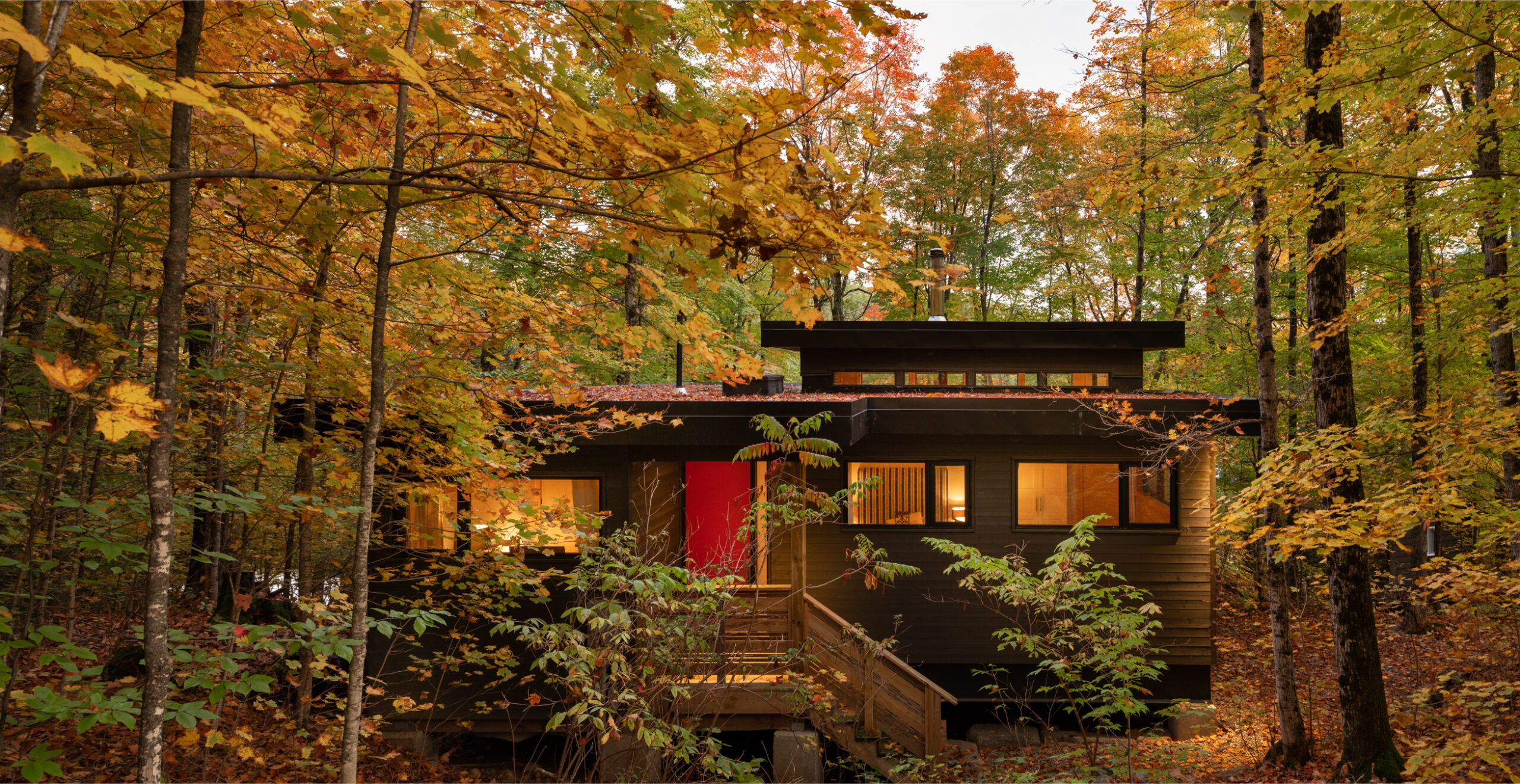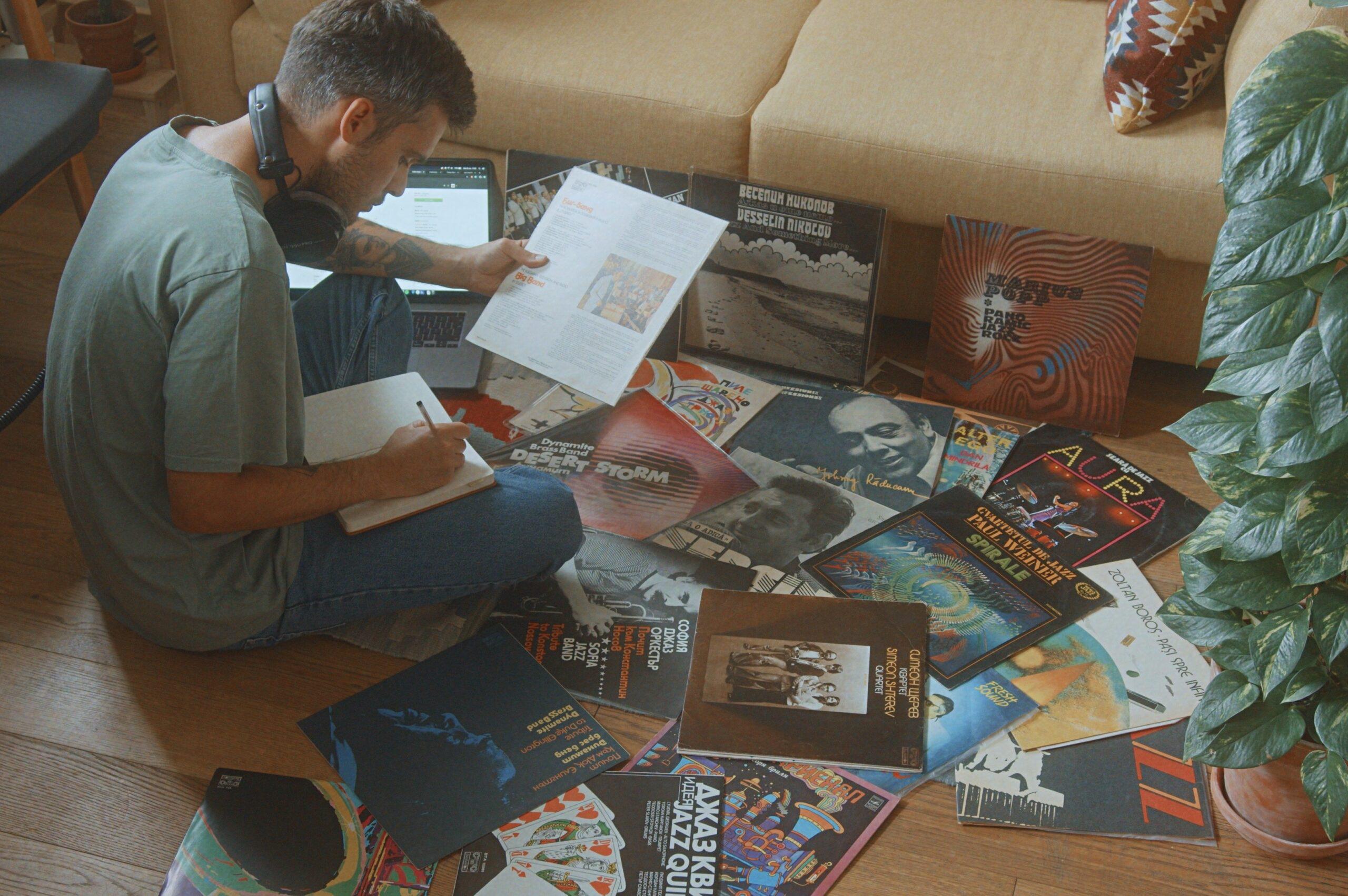The Sorry Girls Teach At-Home Upcycling and DIY Sustainability
Trending environmentalism.

Becky Wright (left) and Kelsey MacDermaid (right) are The Sorry Girls on Youtube.
In many ways, Becky Wright and Kelsey MacDermaid have grown up in front of the camera. The Sorry Girls’ 10-year legacy on YouTube, which has earned them over two million subscribers, started in a university dorm room with the pair sharing tips on DIY Halloween costumes. It has since morphed into a platform that covers all manner of home improvement and renovation projects, with a focus on sustainability and upcycling. Using these concepts as a touch point, viewers have watched the pair hone their practical skills and develop a unique platform that can oscillate between a vlog-style home improvement program, a video how-to guide, and a challenge-based game show, sometimes all in one video.
The pair have a background in film production and were working in the industry until 2015 when they quit their jobs to pursue YouTube full-time. From their Halloween costume origins, the two have expanded into making over people’s holiday homes in a series called “Upgrade My Stay,” renovating their own homes in “Making Home,” and walking people through their most recent DIY projects in “DIY Diaries.” But it is their continued emphasis on environmental consumership that has the Sorry Girls on the cutting edge of a movement that is currently at its tipping point. Mindless consumption for consumption’s sake is on the way out, and an emphasis on craftsmanship and uniqueness is becoming more pervasive.
“There’s this fast-fashion trend with furniture and home decor that’s being made really cheaply and in not great ways,” Wright says. “We care a little bit more about how things are made and what materials go into it,” she notes of their eco-mindedness.
Thrift shopping, not to be confused with vintage or antique shopping, isn’t just about buying second hand but uncovering the potential second life for preloved objects. And thrift-flipping is taking those objects and making changes either drastic or minimal to make them more functional, beautiful, and customized to your individual space.
MacDermaid was always a thrifty kid and has taken this into adulthood, refining her aesthetic along the way. “Thrifting is my happy place for sure,” she says. Most recently, she made over a thrifted hutch that she found on Kijiji, transforming the standard dark-wood piece into a white midcentury modern statement with reeded-glass doors. She used her Instagram stories to ask viewers which design choices she should make and documented the process for a video.
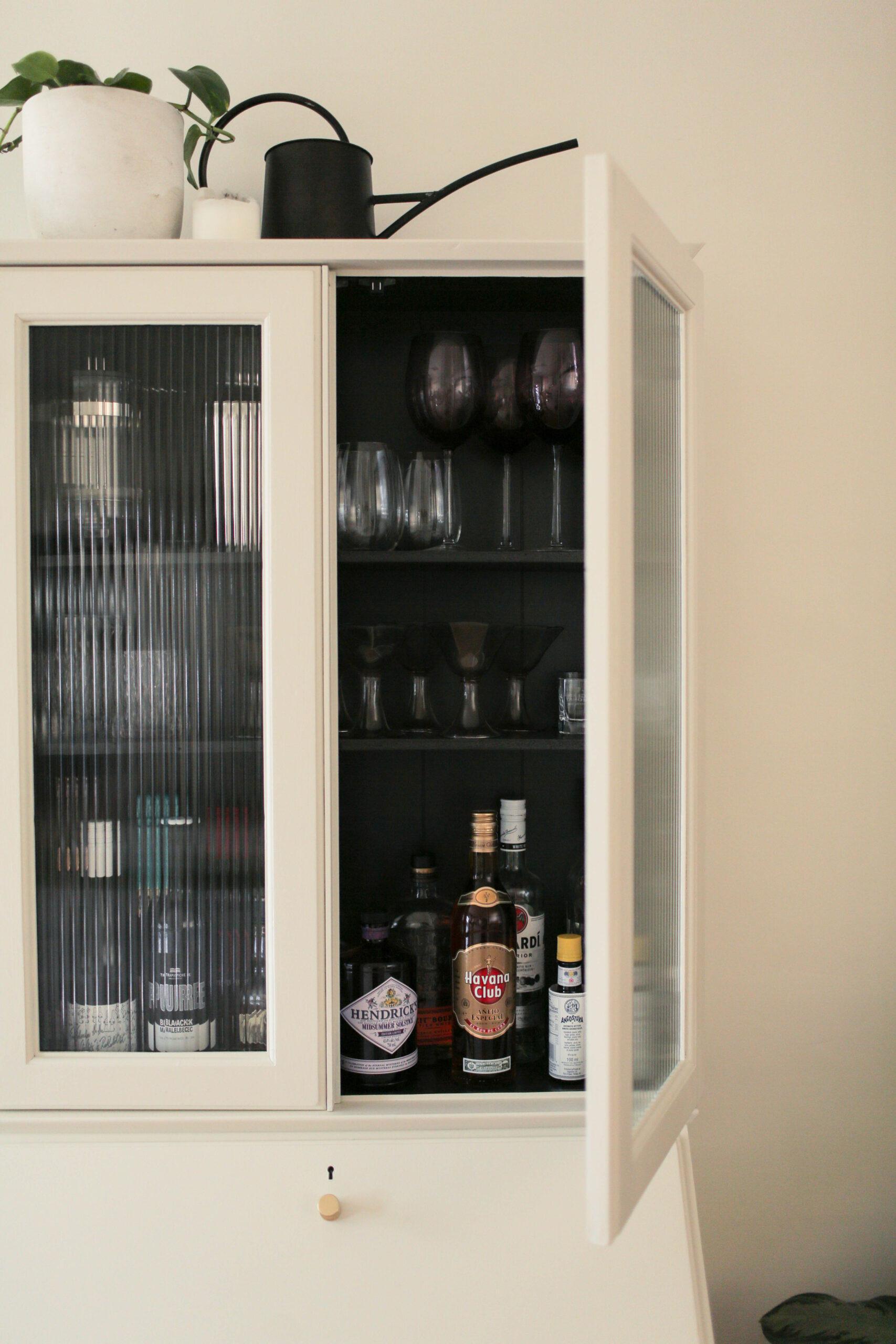
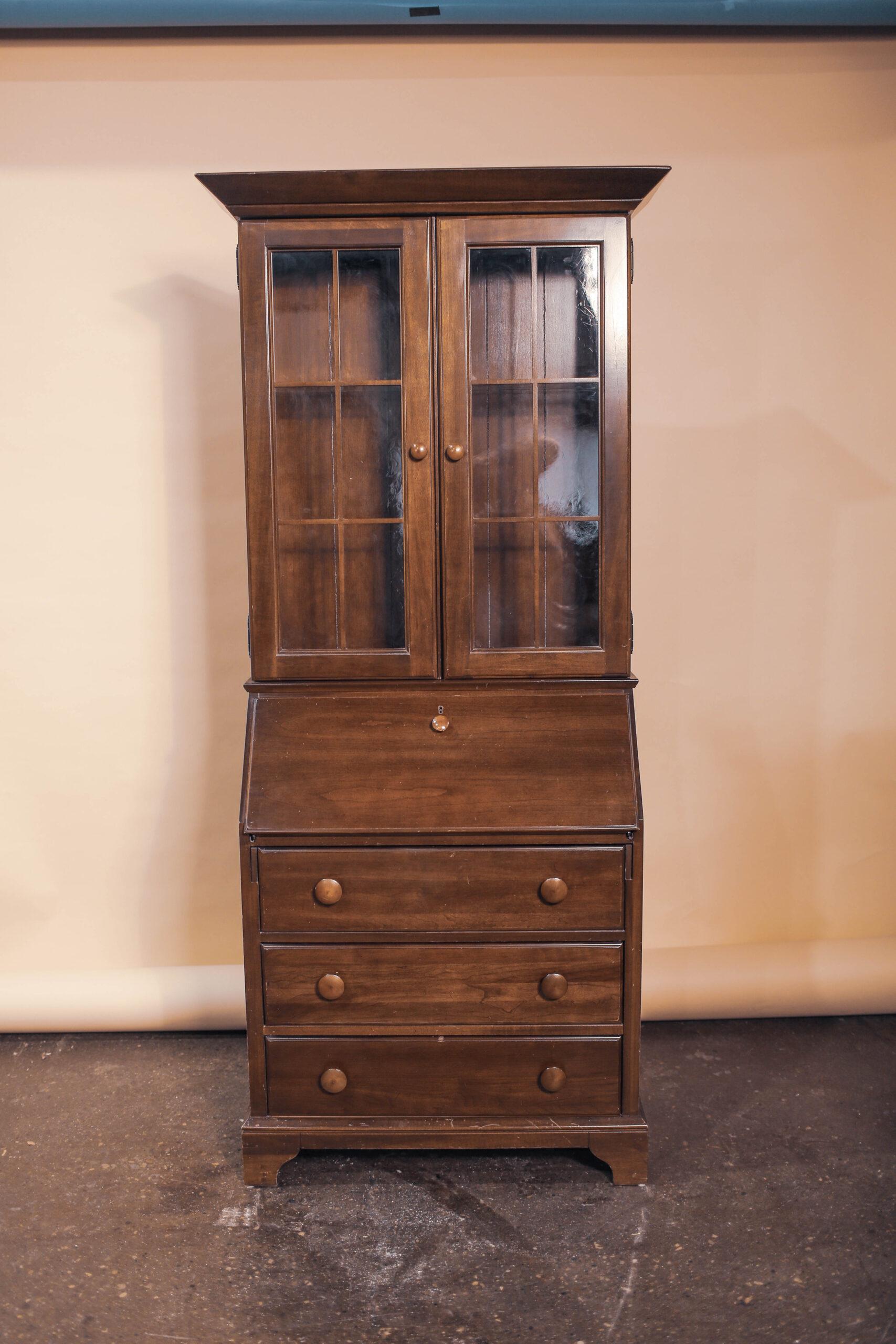
Before.
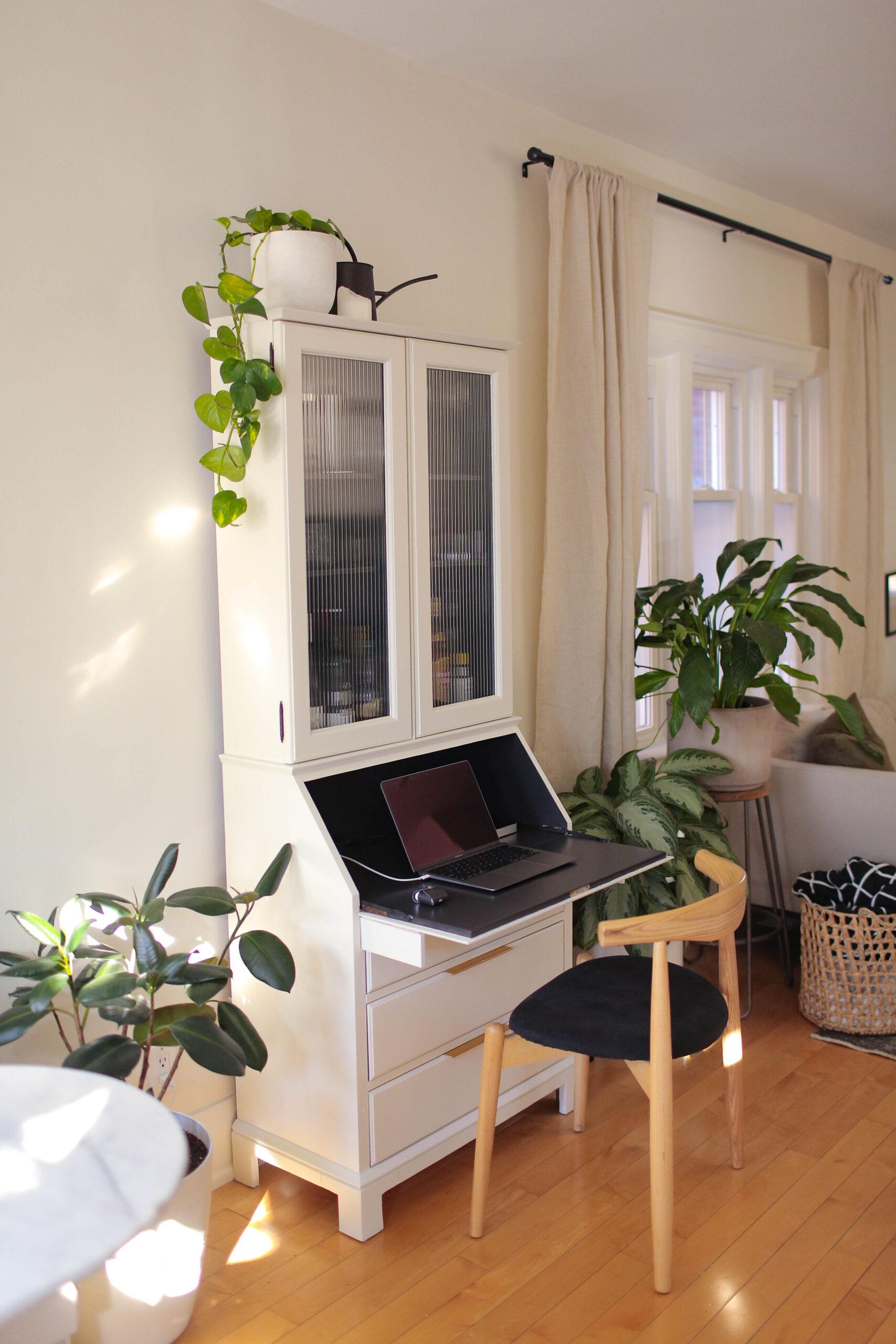
After.
The channel encourages people not only to thrift-flip but to also consider upcycling items they already own to make them more functional instead of just getting rid of them. “People think that you need to completely redo everything, take out all the stuff, and start fresh and buy everything. But that’s so not our approach, it’s not an eco-approach, and I just feel that’s really wasteful,” Wright says. “And I think that’s very much a different way of looking at home design than what has traditionally been done.”
The two may not have taken a traditional path into the design world, but they certainly live and breathe their craft. They find inspiration in the same way any other artist would. “I think sometimes it’s hard to pinpoint where your inspiration comes,” MacDermaid explains. “We see so much every single day. Honestly, sometimes it can be the way a shadow is cast or an old movie I’m watching that has rippled glass, and it’s like, ‘oh yeah, I love that.’” She continues, “I wish I had an answer for this because people ask me, and I feel like it’s just a lot of opening your eyes and paying attention to what speaks to you as far as, like, colour patterns, light, all of those things.”
“It comes with the experience and expertise of just doing this for so long,” Wright says. “Every time I learn a new skill, it’s another thing I add to the back of my brain of something I can do in the future. For example, there was a time where we were on a big kick of adding wood tamper trim in our office, and as soon as I learned how to do that on one piece of thrifted furniture, then it opened a world of all these other pieces of furniture that I could add it to.”
The same goes for tiling or terrazzo, punch needle rug-making, or any other medium the girls dare to try out on their channel. They are not only ambassadors for more environmentally friendly design but also living examples of how accessible this lifestyle can be. Their most recent series, “How to Go Do,” is meant to distill everything they have learned over the years into easily digested media bites that people can come back to for reference as they embark on their own DIY journey.
